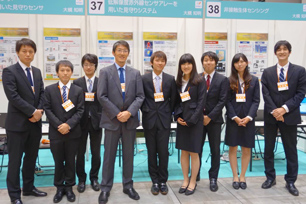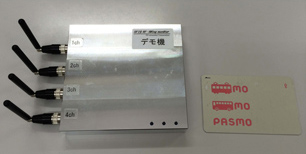Tomoaki Otsuki, Professor, Faculty of Science and Technology, Department of Information and Computer Science
Care Technology for a Safe and Comfortable Society

In Japan, where the population is aging, more than one in four citizens are aged 65 or over, and the number of older people who live alone is increasing. It is estimated that the ratio of older people living alone will rise to 37.7% in 2030. In general, older people have weaker muscles and bones, and many suffer fractures by just falling over, and it takes them a long time to heal. According to the 2014 Annual Report on the Aging Society, 77.1% of accidents involving older people—the vast majority—take place in the house. The ratio of older people becoming victims of crime is also rising.
Many technologies such as security cameras, monitoring cameras, and wearable devices are being developed to realize a safe and secure society in which older people can live safely and with peace of mind. These technologies have advantages, but at the same time, there are disadvantages. For example, security cameras and monitoring cameras tend to lead to an invasion of privacy, and it is difficult to install them within the house. Wearable devices, which recently attracted a lot of attention, also have disadvantages as it can be troublesome putting them on or one can just forget to do so in the first place.

As a solution to these problems, we are developing a monitoring technology that uses radio waves. Appliances such as televisions, radios, and cellular phones use radio waves, and although they are not visible, they can travel far and wide, even reaching shadow zones . The radio frequency sensor that we are now developing detects how the radio waves are propagated, and based on the variation, estimates people’s actions and location. Since it detects only the radio propagation, there is no need to worry about invasion of privacy as with video cameras, and since the technology can be used easily by installing the sensor in the house, there is no need to worry about the trouble of putting on or forgetting to wear the device.
In addition, we are now developing a radio-wave technology that can detect not only actions and locations but also breathing, heartbeat, and even blinking without attaching anything to the body. If we make use of this technology, in addition to watching over and checking the health of older people, we will also be able to detect sleepiness and degree of concentration and fatigue when driving, working on a computer, or studying, without the need to wear anything and while protecting the user’s privacy.
Today, aiming to put these research findings to practical use, we are advancing our research together with 30 lab members including 10 international students from various countries. We would like to strive towards a society in which older people can live safely and comfortably.
*Position titles, etc., are those at the time of publishing.
